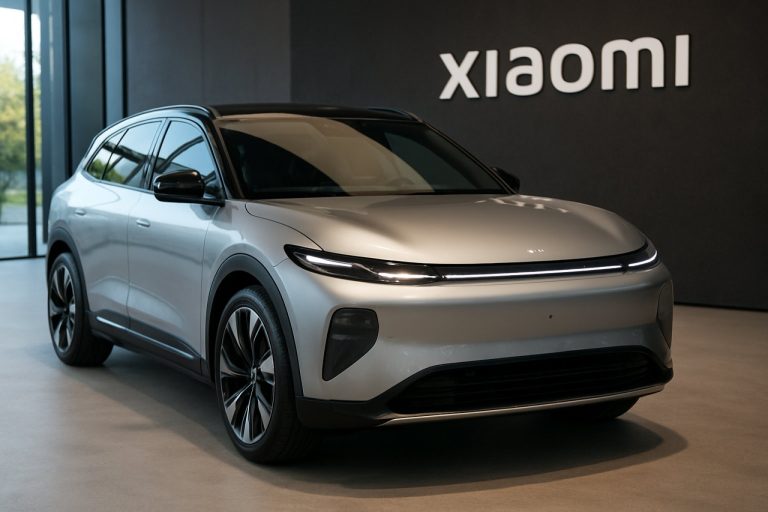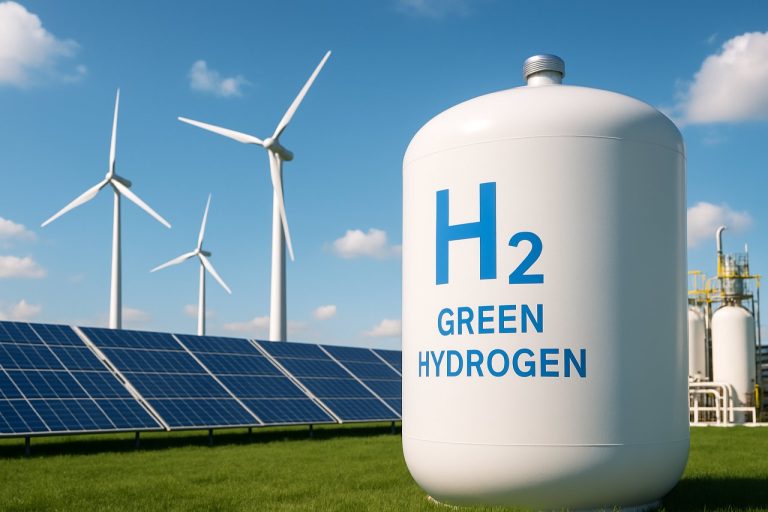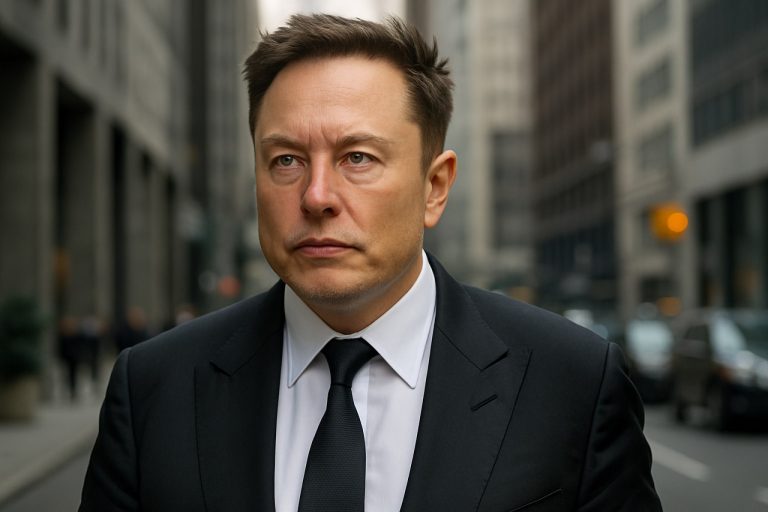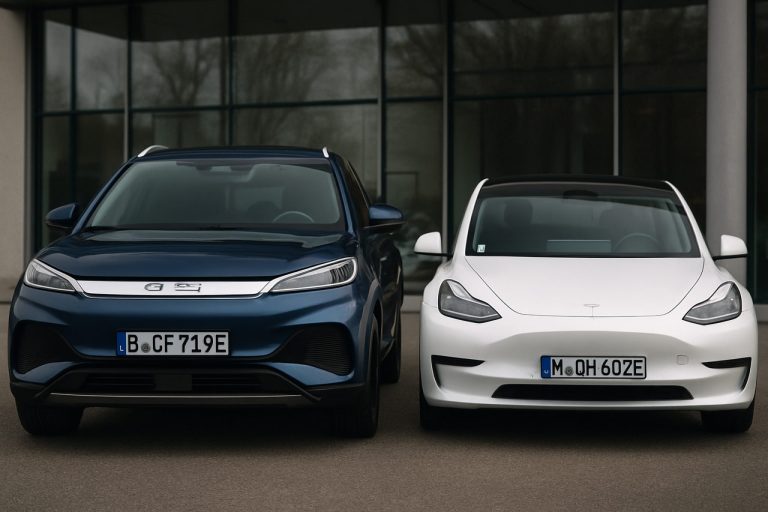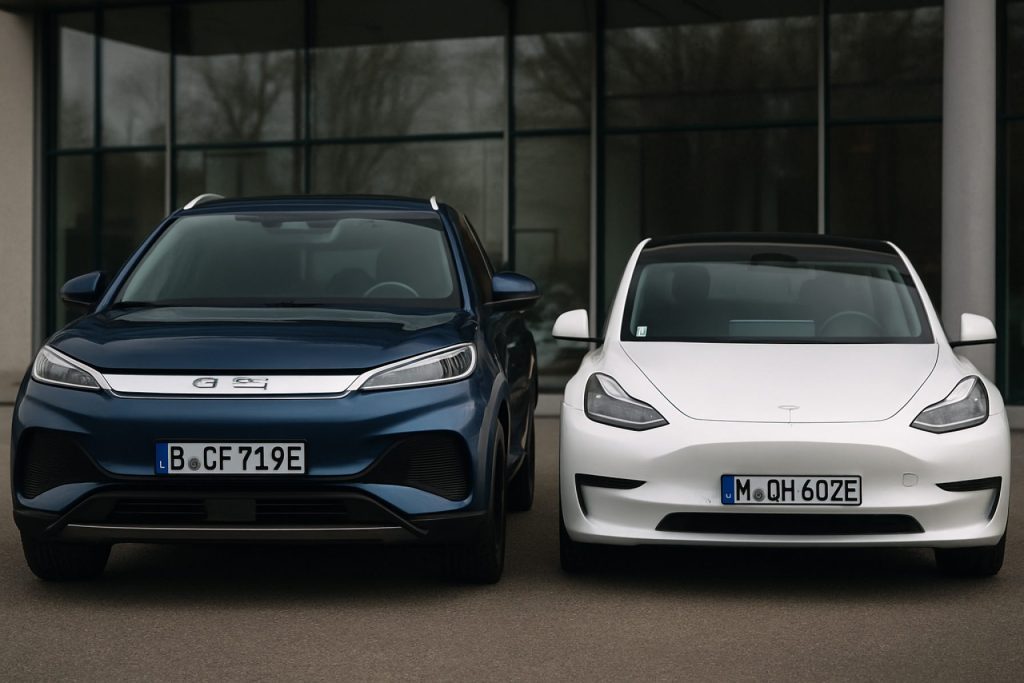
- BYD surpassed Tesla in pure electric car sales in Europe for Spring 2025, signaling a major shift in the EV market.
- BYD’s strategy: rapid expansion in Eastern Europe, building local factories to circumvent tariffs and qualify as “local.”
- Competitive pricing fueled by Chinese government subsidies enabled BYD to rapidly gain market share.
- Much of BYD’s success comes from fleet sales, casting doubt on its long-term consumer hold.
- Rising EU concerns have led to proposed 35% tariffs on Chinese EV imports to counter aggressive expansion and state subsidies.
- Europe’s car industry now faces heightened competition, supply chain upheaval, and policy uncertainty, with traditional and new brands posting strong growth.
- The future of Europe’s electric vehicle market remains uncertain—caught between innovation, global trade dynamics, and regulatory pushback.
Spring 2025 saw a moment that rippled far beyond car dealerships: BYD, the Chinese electric vehicle powerhouse, outpaced Tesla for the first time ever in Europe’s pure electric car market. The numbers, though razor-thin—just 66 vehicles—hinted at a seismic shift not just in sales charts but across the landscape of global industry and politics.
Clouds hung low over Europe as BYD’s badge gleamed on 7,231 newly registered vehicles, marking a 169% surge from the previous year. Meanwhile, Tesla’s numbers, once untouchable, slipped, bearing witness to a 49% yearly decline. Local giants like Volkswagen and Skoda surged ahead. For many, this reversal of fortunes signaled more than a change in consumer preference. It exposed Europe’s vulnerability—and raised urgent questions about the future of its automaking prowess.
How did BYD, virtually unknown in corners of Europe just a decade ago, manage such a feat? The company’s advance was anything but accidental. While Western rivals scaled back, BYD unfurled a masterclass in strategic maneuvering. It set up factories in Hungary and other receptive Eastern European countries—places hungry for foreign investment and less wary of Chinese competition. This not only allowed BYD to dodge restrictive tariffs but enabled its models to claim “local” status—legal, if controversial.
Blanketing the continent, BYD chose price over profit. Subsidized generously back home, its cars crashed through price barriers, seducing buyers eager for a green, affordable ride. Yet, hidden beneath this green veneer, pollution from battery production and recycling largely remained within China’s borders, a stark contrast to the clean image that wooed European consumers.
The shift didn’t happen in a vacuum. As the Volkswagen group and others expanded, Tesla faltered—its image tainted not just by technical hiccups or new rivals, but by CEO Elon Musk’s increasingly polarizing stance in European politics. Europe’s policy landscape began to splinter from America’s: while the US cooled on EV subsidies under shifting administrations, Europe pressed forward with aggressive carbon-neutral goals.
Such disruptions drew the ire of EU policymakers. By late 2024, the European Commission proposed imposing a punishing 35% tariff on Chinese EV imports, a move designed to blunt the edge given by state subsidies and massive overcapacity. The continent’s car market—twice smaller than what Chinese factories can churn out—risked being overwhelmed, making the EU’s refusal to act seem unthinkable.
Even so, BYD’s path forward is riddled with obstacles. Most of its European registrations spring from large-scale rental fleets, not consumers. Its foothold, though real, rests partly on fragile ground. Discussions are now underway to set minimum pricing for Chinese EVs, but consensus eludes both sides. Meanwhile, BYD races to localize operations by announcing plants in Brazil, Thailand, and Turkey, striving to deactivate the tariff time bomb and secure its slice in a volatile global market.
Industry analysts urge caution. Europe’s hunger for innovation is undiminished—brands like Ford, Skoda, and China’s own XPeng are all posting triple-digit growth rates. Despite headline numbers, insiders see BYD’s rise as a temporary dividend of both policy gaps in Europe and an unprecedented glut of Chinese supply, not a guaranteed new order.
The ultimate question hovers: Is BYD’s European lead a fleeting crest before the protectionist tide, or the dawn of a new era where supply chains and loyalties dissolve at the border? The numbers are telling, but the battle for Europe’s roads—and its industrial future—has just begun.
Key takeaway: BYD’s rapid ascent in Europe underscores not simply a carmaker’s prowess but a continent’s struggle between economic appetite and geopolitical defense. As EU regulators clamp down and competition intensifies, Europe finds itself at a crossroads, the outcome of which will echo across industries and borders alike. Looking for the pulse of transformation in autos, trade, or policy? Watch this space.
The Electric Shock: What BYD’s Surge Means for Europe, Tesla, and the Future of Cars
BYD’s European Takeover: Untold Dynamics & Big Implications
The automotive world was rocked in Spring 2025 when BYD overtook Tesla in Europe’s pure electric car market—a development echoing beyond mere sales numbers. Here, we go far beyond the headlines, bringing you industry insights, the real reasons for BYD’s surge, potential risks, and immediate steps European consumers and carmakers can take right now.
—
How BYD Outpaced Tesla—and What Was Missed
1. BYD’s Supply Chain Mastery
– Vertical Integration: BYD’s unique “blade battery” technology is developed and manufactured in-house, reducing costs and increasing reliability compared to rivals relying on third-party suppliers (source: BloombergNEF).
– Battery Innovation: The lithium iron phosphate (LFP) blade battery is safer, offers longevity (up to 1.2 million km lifespan), and is less prone to thermal runaway—the kind of battery fire that plagued early EVs.
– Aggressive Localization: Setting up factories in Hungary, Thailand, and Turkey helps BYD bypass import duties and tariffs, allowing for rapid scaling and local adaptation.
2. Market Positioning Beyond Price
– Product Range: BYD offers models from compact city cars like the Dolphin to luxury SUVs like the Tang—directly addressing gaps Tesla left untouched.
– Fleet Bulk Sales: Much of BYD’s European growth comes from fleet and rental agreements rather than individual retail buyers, sharply contrasting with Tesla’s direct-to-consumer approach.
3. Brand Perception and Soft Power
– Sponsorship and Influencers: BYD invested heavily in high-profile sponsorships (e.g., UEFA Europa League) and collaborated with European social media influencers, accelerating brand awareness.
– Green Narrative, Real Pollution: While marketed as “clean cars,” most BYD EVs are produced in China where power generation and battery recycling carry a high carbon footprint—a fact underreported in most European media.
—
Limitations, Controversies & Criticisms
Tariffs and Trade War Risks
The proposed 35% EU tariff on Chinese EV imports could fundamentally disrupt BYD’s European trajectory. There are also rumors of potential retaliatory measures from China against European luxury car exports (source: Reuters).
Environmental Double-Edged Sword
– Battery Recycling Challenge: Europe lacks sufficient infrastructure to recycle Asian EV batteries, risking new environmental burdens.
– Carbon Offset Loopholes: “Carbon neutrality” claims often ignore upstream impacts (battery production, mining in Africa).
Consumer Trust Question
Despite fleet growth, BYD’s direct retail sales remain low—European consumers still favor legacy brands like Volkswagen or Ford.
—
Market Trends & Forecasts
What Analysts Say (2025–2030)
– Short-Term: BYD’s market share may balloon short term, but protectionist measures could see it plateau or fall back after 2026.
– Long-Term: European brands, leveraging EU incentives and local partnerships, are preparing EV models to recapture market share by 2027–2028.
New Entrants Spurring Competition
Huge growth from China’s Xpeng and Nio, and resurgence from Skoda and Volkswagen, mean the landscape is likely to fragment further—benefiting consumers through price pressures and more options.
—
How-to: Choosing the Right EV in Europe (2025)
Step 1: Review tariff news and EV subsidies in your country.
Step 2: Compare warranty terms and battery technology (BYD’s LFP blade battery vs. Tesla’s NCA/NMC).
Step 3: Check for after-sales service availability—BYD’s network is still growing.
Step 4: Evaluate sustainability—ask about recycled content and local battery recycling programs.
Step 5: Test drive multiple brands—Volkswagen, Ford, Tesla, BYD—to gauge comfort and features.
—
BYD vs. Tesla: Quick Specs & Pricing (Spring 2025)
| Feature | BYD Dolphin (Base) | Tesla Model 3 (Base) |
|——————-|——————–|———————-|
| Battery Type | LFP Blade | NCA |
| Range (km, WLTP) | 427 | 491 |
| Base Price (EUR) | 28,990 | 39,990 |
| ADAS Level | Level 2+ | Level 2+ |
| Warranty | 8 yrs/battery | 8 yrs/battery |
| Fleet Availability| High | Medium |
—
Security, Sustainability, and Real-World Use
– Cybersecurity: BYD recently partnered with EU digital security firms to ensure their car software complies with GDPR and anti-hacking standards, but Tesla’s over-the-air update technology is still more mature.
– Charging Compatibility: Both BYD and Tesla models now support CCS Type 2 charging, but only Tesla provides access to the Supercharger network in every country so far.
– Ownership Experience: Early reviews suggest BYD lags slightly behind Tesla in autopilot smoothness and infotainment systems.
—
Pros & Cons Snapshot
BYD Pros:
– Lower prices
– Localized production sidesteps tariffs (for now)
– Reliable, safe, long-life LFP batteries
– Growing product variety
BYD Cons:
– Heavily reliant on fleet—uncertain consumer acceptance
– Sustainability claims contested due to overseas production impact
– After-sales and service infrastructure still under development
Tesla Pros:
– Strong charging network
– Tech leadership in software/updates
– Loyal consumer following
Tesla Cons:
– Image hit among some European buyers
– Higher prices and less model diversity at some price points
—
Most Pressing Reader Questions—Answered
Q: Will EV prices rise if the EU enacts tariffs?
A: Almost certainly, particularly for Chinese models. Localized production may eventually balance costs (source: European Automobile Manufacturers’ Association).
Q: Should I buy a BYD now or wait?
A: Consider your own priorities—fleet buyers enjoy fleet discounts now; individual consumers may wish to wait for more localized after-sales integration.
Q: Are BYD’s EVs sustainable?
A: The cars emit less locally, but supply chain impacts remain significant unless battery production moves further to Europe.
—
Actionable Recommendations—What to Do Right Now
– Stay informed: EV policy and tax incentives are fluid—subscribe to official EU and local channels for updates.
– Audit your needs: If access to a strong after-sales network is critical, established European brands may still serve you best.
– Shop fleet deals: Corporate or rental buyers can secure significant discounts on BYD models as the company seeks to build market share.
– Ask tough questions: Ask dealers and manufacturers about battery origin, recycling plans, and carbon accounting.
—
The future of Europe’s car market is at a crossroads, with BYD’s dramatic rise just one part of rapid, global changes. Whether you’re a consumer, fleet buyer, or industry watcher, understanding these deeper shifts will ensure you make smart, future-ready choices—and stay ahead in a transforming world.
—
For further up-to-date insights into the evolving automotive industry, including news on European legacy brands, visit the main sites for Volkswagen and Ford.
